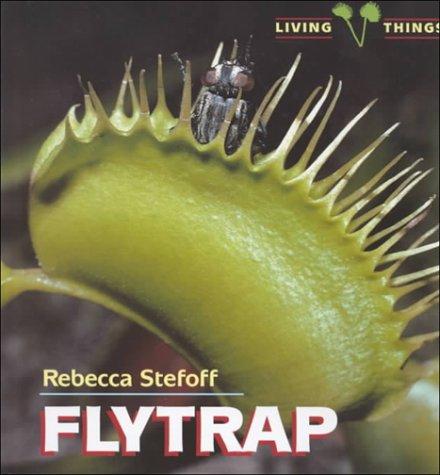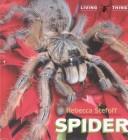Living Things
16 Reviews
(3)
PS
Why Living Things Need series.
These books explore what people, animals, and plants need to survive. Each book examines the particular life-sustaining element by defining it, explaining why it is necessary and how it functions, and presenting examples of it in use. Concise text, colorful photographs, engaging quizzes ("Which of these things does not need...?"), and a picture glossary make the information preschooler-friendly. Ind. Review covers these Why Living Things Need titles: Homes, Light, and Water.
Reviewer: Meredith M. Sittman
(3)
PS
Why Living Things Need series.
These books explore what people, animals, and plants need to survive. Each book examines the particular life-sustaining element by defining it, explaining why it is necessary and how it functions, and presenting examples of it in use. Concise text, colorful photographs, engaging quizzes ("Which of these things does not need...?"), and a picture glossary make the information preschooler-friendly. Ind. Review covers these Why Living Things Need titles: Homes, Light, and Water.
Reviewer: Meredith M. Sittman
(3)
PS
Why Living Things Need series.
These books explore what people, animals, and plants need to survive. Each book examines the particular life-sustaining element by defining it, explaining why it is necessary and how it functions, and presenting examples of it in use. Concise text, colorful photographs, engaging quizzes ("Which of these things does not need...?"), and a picture glossary make the information preschooler-friendly. Ind. Review covers these Why Living Things Need titles: Homes, Light, and Water.
Reviewer: Meredith M. Sittman
(4)
4-6
Classifying Living Things series.
These books explain scientific classification, then define their subjects further. Flowering concentrates on nine of the numerous orders of monocots and dicots. Nonflowering includes information about the ten divisions of seedless and seed plants combined. Captioned color photos, sidebars, and diagrams illustrate the text; a few more of the last would be helpful, as the text is sometimes dense. Reading list. Glos., ind. [Review covers these Classifying Living Things titles: Classifying Flowering Plants and Classifying Nonflowering Plants.]
Reviewer: Frieda F. Bostian
(4)
4-6
Classifying Living Things series.
These books explain scientific classification, then define their subjects further. Flowering concentrates on nine of the numerous orders of monocots and dicots. Nonflowering includes information about the ten divisions of seedless and seed plants combined. Captioned color photos, sidebars, and diagrams illustrate the text; a few more of the last would be helpful, as the text is sometimes dense. Reading list. Glos., ind. [Review covers these Classifying Living Things titles: Classifying Flowering Plants and Classifying Nonflowering Plants.]
Reviewer: Frieda F. Bostian
(4)
4-6
Classifying Living Things series.
This book explains scientific classification, defines invertebrates, explains their general characteristics, and gives major examples of their eight main phyla: sponges, cnidarians, flatworms, roundworms, segmented worms, mollusks, arthropods, and echinoderms. Captioned photographs, sidebars, and diagrams enhance the text; a few more of the last would be helpful, as the text is sometimes dense. Further reading. Glos., ind.
Reviewer: Frieda F. Bostian
(4)
4-6
Classifying Living Things series.
This book introduces principles of scientific classification. Beginning with an explanation of classification, the book supplies a table with orders and other classification data specific to birds; for the remainder, double-page spreads contain short paragraphs about different families, groups, etc. Captioned color photos and sidebars add to this formulaic introduction. Reading list. Glos., ind.
Reviewer: Frieda F. Bostian
(4)
4-6
Classifying Living Things series.
This book introduces principles of scientific classification. Beginning with an explanation of classification, the book supplies a table with orders and other classification data specific to insects; for the remainder, double-page spreads contain short paragraphs about different families, groups, etc. Captioned color photos and sidebars add to this formulaic introduction. Reading list. Glos., ind.
Reviewer: Frieda F. Bostian
(4)
4-6
Classifying Living Things series.
This book introduces principles of scientific classification. Beginning with an explanation of classification, the book supplies a table with orders and other classification data specific to mammals; for the remainder, double-page spreads contain short paragraphs about different families, groups, etc. Captioned color photos and sidebars add to this formulaic introduction. Reading list. Glos., ind.
Reviewer: Frieda F. Bostian
(4)
4-6
Classifying Living Things series.
REVIEW MISSING
Reviewer: Frieda F. Bostian
(4)
4-6
Classifying Living Things series.
This book introduces principles of scientific classification. Beginning with an explanation of classification, the book supplies a table with orders and other classification data specific to fish; for the remainder, double-page spreads contain short paragraphs about different families, groups, etc. Captioned color photos and sidebars add to this formulaic introduction. Reading list. Glos., ind.
Reviewer: Frieda F. Bostian
(4)
4-6
Classifying Living Things series.
These books introduce principles of scientific classification. Beginning with an explanation of classification, they supply a table with orders and other classification data; for the remainder, double-page spreads contain short paragraphs about different families, groups, etc. Captioned color photos and sidebars add to these formulaic introductions. Reading list. Glos., ind. [Review covers these Classifying Living Things titles: Classifying Amphibians and Classifying Reptiles.]
Reviewer: Frieda F. Bostian
(4)
4-6
Science of Living Things series.
The best-known groups of mammals, such as primates and bats, are described, but so are more unusual groups, including monotremes (the platypus) and edentates (the sloth). The result is a well-rounded introduction, illustrated with color photographs and drawings. The unattractive design is a drawback, and a little more in-depth discussion would have added to the book's usefulness. Glos., ind.
Reviewer: The Horn Book, Inc.
(4)
4-6
Science of Living Things series.
From sea-living sponges to African elephants, this survey covers the whole spectrum. Color photos and drawings show examples from major groups, highlighting both common and unusual animals. The book is a bit rushed in its attempt to cover the entire animal kingdom, and some of the drawings are more functional than attractive. Glos., ind.
Reviewer: The Horn Book, Inc.
(3)
K-3
Living Things series.
Stefoff discusses how these plants trap and eat their prey as well as where different varieties of carnivorous plants, including pitcher plants, sundews, and bladderworts, can be found. Close-up, detailed photographs, well-integrated in an open design, extend the clearly written text. An illustrated section at the back provides additional information about six of these plants. Bib., ind.
Reviewer: Kitty Flynn
(3)
K-3
Living Things series.
Stefoff discusses how various types of spiders spin webs, trap or hunt food, and lay eggs. Different varieties of spiders, including the Eurasian water spider and the wolf spider, are introduced in the clearly written text and in the close-up, detailed photographs, which are well-integrated in an open design. An illustrated section at the back provides additional information. Bib., ind.
Reviewer: Kitty Flynn
16 reviews
We are currently offering this content for free. Sign up now to activate your personal profile, where you can save articles for future viewing.


















